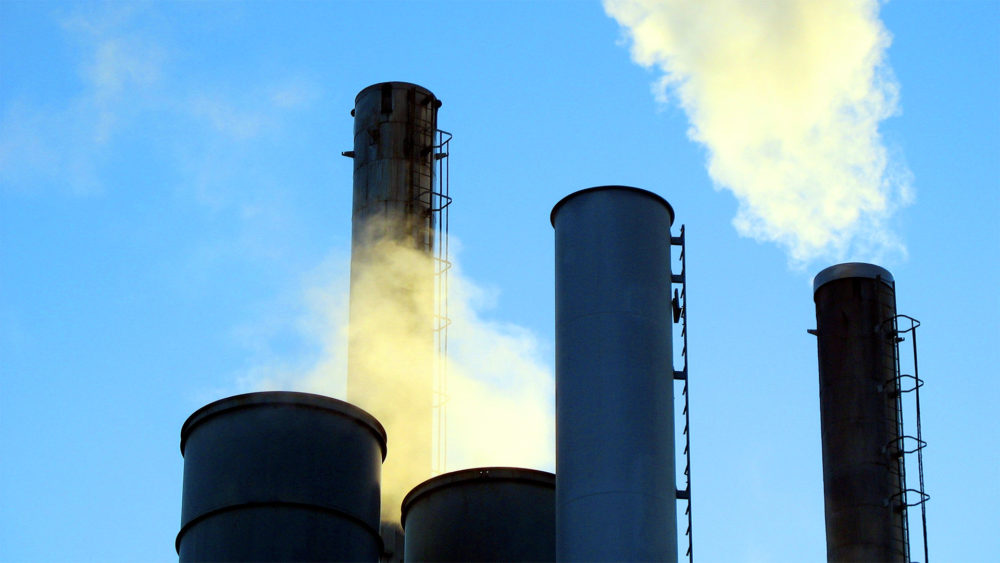One of the greatest tragedies in our country is that many communities—especially communities of color, low-income communities, and Indigenous communities—are unnecessarily burdened with higher levels of air pollution, contaminated water, and other environmental stressors. This level of pollution results in a heightened risk of a number of serious health issues like asthma, cancer, severe COVID-19 symptoms, and death. Members of underserved communities not only face these long-standing and deeply entrenched inequities, but they also usually have the least access to decisionmakers who will listen to them and who will try and reform the current system.
Therefore, it is a genuinely encouraging sign that the incoming Biden administration has pledged to carry out significant reforms to promote and center environmental justice with an “all-of-government” approach. During the presidential campaign, the Biden team released a detailed environmental justice plan and during the presidential transition, they released a plan on how they will advance and prioritize racial equity.
During the summer and fall, we at the Union of Concerned Scientists released a series of factsheets detailing specific ways that the federal government can reform and prioritize science-based decisionmaking, including a factsheet on equity and environmental justice. Here are our top four actions that we think the incoming Biden administration should take to center and prioritize environmental justice.
1. For significant rulemaking, make scientific analyses on environmental justice mandatory
Because of a 1994 executive order, federal agencies are required to assess how proposed rules will affect underserved communities. As I detailed in a previous blog post, this executive order was the result of sustained advocacy and organizing by environmental justice groups and continues to have a wide impact today. However, the executive order only encourages these analyses “whenever practicable and appropriate” and therefore there is nothing that mandates their development or use in all policymaking.
We propose that the Biden administration make these analyses mandatory for significant rulemaking. Additionally, because these analyses are so important in the protection of communities, we propose expanding out how this science is conducted in the following ways:
- Require or strongly recommend the use of cumulative impacts analyses, which would examine the effect of multiple environmental stressors on the health and safety of communities
- Build upon EPA’s EJSCREEN and other environmental justice mapping tools to make them more comprehensive and easier to use
- Ensure that the scientific tools used to collect pollution data are functioning well and are placed in areas that can properly measure the effects on communities. For instance, a recent report by the US Government Accountability Office (GAO) found that a large number of EPA air monitors are out-of-date, in disrepair, or otherwise not capturing air pollution spikes in communities.
2. Better engagement with community members on environmental justice issues
Federal agencies often fail to engage with community members in two major ways:
- Agencies often fail to properly, frequently, and fully inform community members of the pollution and hazards they face
- Community members often face barriers when they to attempt to participate in rulemaking processes like public comments and public hearings
These are hard problems to address, since they affect dozens of agencies and thousands of projects and operations. There are also few concrete measures of transparency and accountability to ensure that federal agencies are operating in an equitable and just manner towards impacted communities.
Therefore, we propose that the Biden administration create an interagency working group focused on environmental justice, which should be developed and coordinated through the Office of Science and Technology Policy (OSTP). The group should be compromised of environmental justice experts across the federal government, environmental justice advocates, community members, and OSTP staff. The working group should solicit stakeholder input from community members early and frequently and issue guidance on how best to meaningfully consult and engage with community members on rulemaking and other decisions that affect them.
3. Establish and reinforce oversight mechanisms that protect people from pollution and other hazards
There are a number of science-based laws, such as the Clean Air Act, the Safe Drinking Water Act, and the Toxic Substances Control Act, that are designed to safeguard people from exposure to pollution, toxic chemicals, and other hazards. However, how these laws are enforced by the EPA and other federal agencies remains a primary concern for environmental justice advocates, since underserved communities often pay the steepest price when federal agencies fail to properly enforce environmental laws that protect people’s health and safety.
The Biden administration should consider devoting time and resources to rebuild and expand the oversight mechanisms for science and environmental laws by committing to fill open safety inspector positions and expanding the workforce responsible for health and safety inspections. We also propose that the Biden administration establish an environmental justice ombudsman to receive, review, and process complaints and allegations with respect to environmental justice programs.
4. Undo and reverse numerous anti-science actions by the Trump administration
According to our tracker, the Trump administration has attacked and undermined science over 170 times. As we detailed in a previous report, when the Trump administration attacks science, the worst consequences are disproportionately borne by low-income communities, communities of color, and Indigenous communities.
The Biden administration needs to carry out numerous rulemaking processes to undo Trump administration actions that, for instance, made it easier for large facilities to release more cancer-causing air pollutants, diminished the ability of community members to weigh in on proposed infrastructure projects, and allowed the sale of a pesticide that is linked to harming the brains of children. My colleague, Dr. Jacob Carter, has written about what the Biden administration can do in its first day in office to reverse these anti-science actions by the Trump administration.
The Biden administration promises environmental justice action
While none of these tasks will be easy to implement, the incoming Biden administration has been signaling during the transition process that they are taking environmental justice seriously. For instance, Biden’s EPA Agency Review Team is led by Patrice Simms, a former environmental justice professor at Howard University School of Law, and Biden’s Council for Environmental Quality team is led by Cecilia Martinez, a veteran environmental justice advocate who Time Magazine recently named as one of the 100 most influential people of 2020 for her “pursuit of environmental justice.”
Biden and Harris’ environmental justice plan is chock-full of excellent proposals like establishing an environmental and climate justice division within the Department of Justice, directing the EPA to create a community notification program to ensure that residents have real-time information on pollution emissions, and directing funds to eliminate sources of legacy pollution such as lead exposure from water pipes and paint in older buildings. In fact, some of the recommendations discussed in this blog post are already listed as Biden administration priorities, such as improving the accessibility of EPA’s EJSCREEN tool, mandating new monitoring in frontline communities, and establishing an interagency team to address environmental justice issues and partner with community members.
We’ve never before had an administration so forthright and keen on implementing environmental justice reforms in the federal government. Let’s hope that the Biden administration lives up to these promises and carries out actions that safeguard the health and safety of millions of people in communities across the country.

